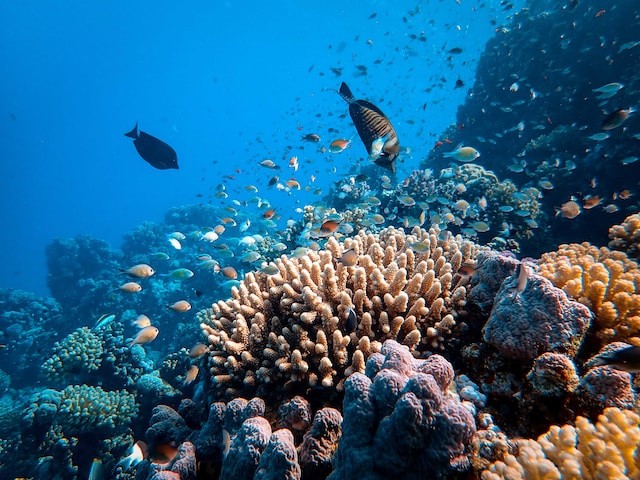Coral reefs are among the most diverse and productive ecosystems on Earth, but they are also under threat from climate change, pollution, overfishing, and other human activities.
One of the key processes that sustain coral reefs is calcification, which is the formation of calcium carbonate skeletons by corals and other organisms.
The environment as a whole, including light, temperature, water chemistry, and ocean currents, also has a great deal of influence on calcification.
To better understand how these factors affect coral calcification in different depths and regions, a team of researchers from the University of Hawai'i at Mānoa (UH Mānoa) conducted a novel study on the world's deepest coral colonies in the waters of the Hawaiian Islands.
Coral calcification rates at extreme depths

The study, published in Coral Reefs, used data from the largest ever drifting sea-ice buoy array, along with 20 years of satellite images, to examine sea ice motion as it drifted from the Arctic Ocean through a deep-water passage called the Fram Strait and eventually into the Greenland Sea.
The Fram Strait is a key region for sea ice export from the Arctic, as it connects the central Arctic basin with the North Atlantic Ocean.
The researchers focused on a group of corals belonging to the genus Leptoseris, which are found in deep, low-light zones throughout the Indo-Pacific region.
These corals form thin horizontal plate-like skeletons that maximize their surface area for capturing downwelling light.
The researchers collected samples of these corals from depths ranging from 230 to 360 feet (70 to 110 meters) in the Au'au Channel between Maui and Lāna'i islands, using a remotely operated vehicle (ROV) operated by the Hawai'i Undersea Research Laboratory (HURL).
To measure the calcification rates of these corals, the researchers used a technique called uranium-thorium dating, which determines the age of coral skeletons by measuring the ratio of two radioactive isotopes.
By comparing the age and thickness of different parts of the coral skeletons, the researchers were able to calculate how fast they grew over time.
Also Read : Unique Deepwater Corals Reefs, Marine Animals Discovered on Wellington's South, Kapiti Coasts
Ocean currents and seafloor features shape sea ice motion in the Fram Strait
The researchers found that these deep corals had very low calcification rates compared to shallow-water corals.
In fact, they reported the lowest calcification rates ever measured for healthy, light-dependent corals in their natural habitat. They also found that these rates varied depending on depth and location within the channel.
The researchers attributed these low calcification rates to the limited availability of light at these depths, which reduces the photosynthesis of symbiotic algae that live within coral tissues and provides them with energy and nutrients.
They also suggested that other factors, such as water temperature, acidity, and nutrient levels, may play a role in influencing coral calcification.
These deep corals had a remarkable ability to quickly grow horizontal surface area despite their low calcification rates, according to the researchers.
They speculated that this strategy may help them to capture more light and enhance their survival in low-light environments.
The study provided new insights into how coral reefs function and adapt in different depths and regions.
It also highlighted the importance of studying and conserving these deep coral ecosystems, which are often overlooked and understudied compared to shallow water reefs.
These deep corals may serve as refuges for biodiversity and genetic diversity in a changing climate, as well as sources of novel compounds for biotechnology and medicine.
Related Article: Ocean Acidification Don't Affect the Behavior of Coral Reef Fishes
© 2025 NatureWorldNews.com All rights reserved. Do not reproduce without permission.





